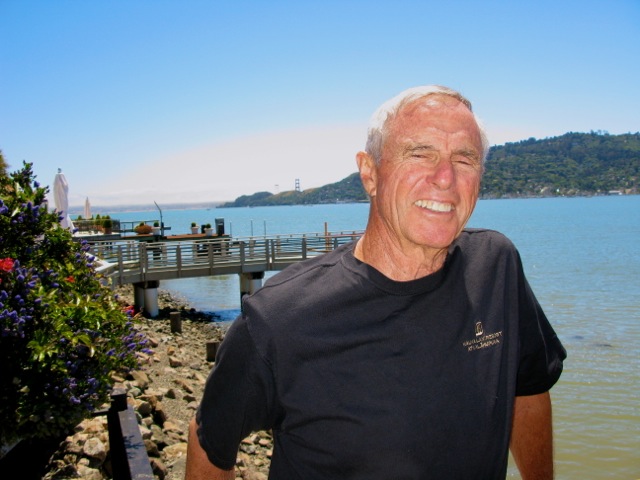
“The Most Interesting Man (you never heard of)” by J. Macon King
30 years after, John DeLorean’s friend and right-hand man revisited the 80’s quintessential corporate tale.
This interview is an updated reprint from Mill Valley Literary Review’s Fall 2013 issue. The background gathering and taping began May 13, 2012 and interview finalized and photographs taken August 30, 2013.
Get LIT and keep us fired up. NEW Free original-design spiral notebook for a donation of $50.00 or more. While supplies last.
Donate via Venmo Venmo profile (perry-king-5) or PayPal Info on donating and notebook here.
Walter Stryker was friend and CFO to the multifarious John DeLorean—the maverick behind America’s seminal muscle car—the “Little GTO” of Beach Boy’s fame, as well as the Pontiac Firebird and Grand Prix. And of course, The Car—the future Back to the Future time-traveling timeless, stainless steel sexy gull winged-door beauty.
DeLorean became the rock star of executives. Friends included Steve McQueen, Johnny Carson and Sammy Davis Jr. who invested in his upstart DeLorean Motor Company. Quite the accomplished playboy, DeLorean was Hugh Hefner on steroids; or on nitro, to utilize auto parlance. His nocturnal companions were sex goddesses—Raquel Welch, Ursula Andress, Candice Bergen, Nancy Sinatra.
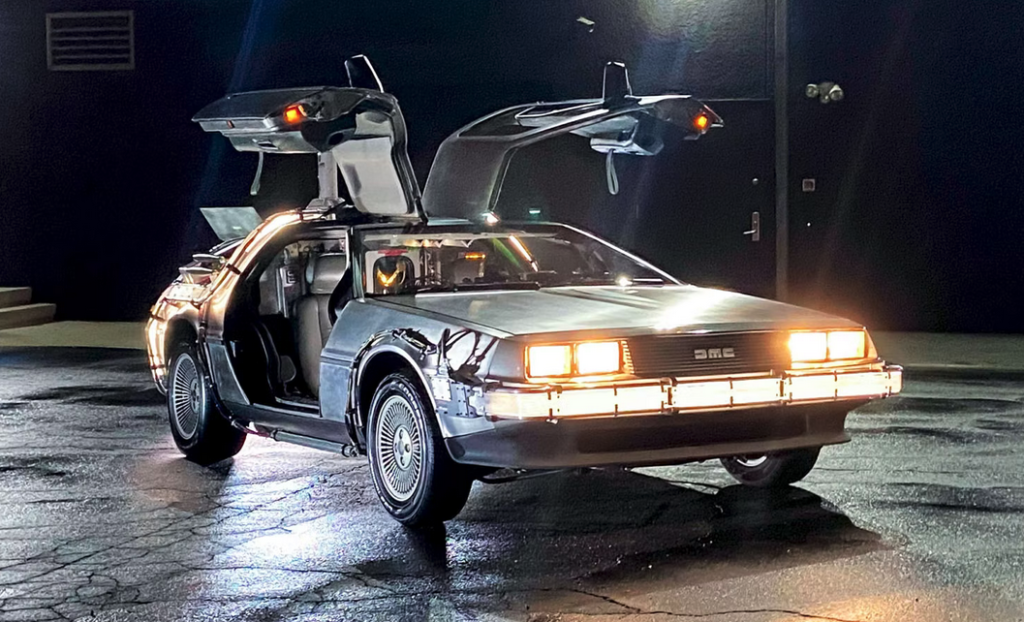
Walter Strycker, unlike the “most interesting man in the world” ads, has not needed to be a womanizing partier to qualify. He has been married to his kinetic wife, Connie, for 60 years. Interesting? Strycker was DeLorean Motor Company’s right-hand man, an international sales exec in IBM glory days, ran an airline, acquired the luxury Pullman sleeper railroad cars, and Marie Callender’s, financed a famous movie, and could raise millions of dollars over lunch.
Does such diverse executive leadership qualify Walter Strycker as one of the most interesting men? Perhaps. But wait, there is a bit more. Stryker has had machine guns pointed at him during the IRA conflict, helped finance the 70’s most memorable football movie, and had meetings with Lee Iacocca and George Wallace. With shades of Ernest Hemingway—Strycker survived three aircraft crashes. He had dinner with the KGB. Oh, he casually adds, I was recently portrayed on the London stage.
We chatted at the Strycker’s West Shore, Belvedere, California home, sampling wine from grapes grown at Strycker Vineyards. Strycker cuts a relaxed, but commanding and fit figure. A rangy six-foot, he still has the bearing of an executive. With Clint Eastwood good looks, he appears 70. He is 84. His demeanor is matter-of-fact and sometimes a little intimidating, until he gives his twinkling smiles. No wonder investors believed in him. This is a man who gets things done and does not suffer fools gladly.
His family was originally with the ill-fated Donner Party. Luckily they were Oregon Trail bound and split-off. They became lumbermen and ranchers outside of Coos Bay, Oregon and grew their holdings to 2000 acres. Their story of independent rustic practicality is reminiscent of the Stampers in Kesey’s Sometimes a Great Notion. His grandfather, one of eighteen siblings, made the move to San Francisco where Walter grew up to graduate Cal in ’51.
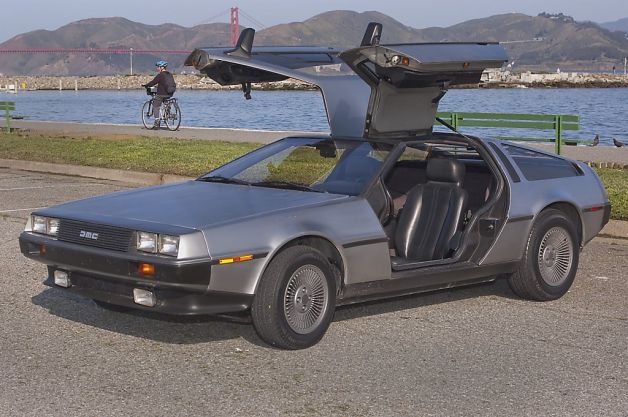
BACK TO THE FUTURE
Strycker and I reviewed his chapter with one of the most iconic corporate characters of the 80’s—John DeLorean, and DeLorean Motor Company.
MillValleyLit: DeLorean’s FBI Report called you a “good friend” of John DeLorean. How did you know DeLorean?
Strycker: John called me through a good friend’s recommendation, Bob Anderson, President and CEO of North American Rockwell. I had put together some mergers and acquisitions with his people in NY. I met with John in Oakland in 1978 to see his DeLorean auto prototype. He had a small group in his company, including some men he cherry picked out of GM. His stainless, gull-wing prototype looked pretty much the same as the production ones you’ve seen. The project was fascinating to me and I agreed to work with him. My chore was to raise a couple of hundred million dollars to put together his factory and marketing program.
John was working out of NY, and that was the point of origin for the financing. He lived in a co-op on 5th Avenue across from the Park, and a lot of times I would stay with John. We shared an office together and the boardroom at Chris-Craft and worked together every day. Herb Siegel was the CEO of Chris-Craft, and he was a friend of John’s, and gave us a place to hang our hats. Over the next two-three years I hit our capital target.
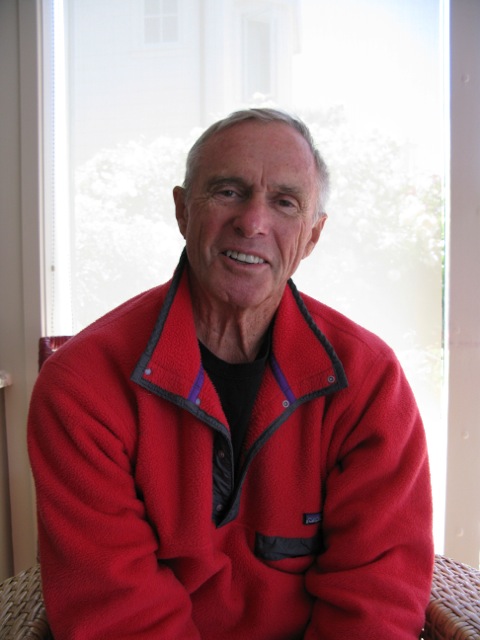
MillValleyLit: How did you transition from raising funding to CFO and John’s right-hand man at DeLorean Motor Company?
Strycker: I took over as CFO when Bob Dewey quit, who had put all his efforts into locating the plant in Puerto Rico. I looked at other locations, including Alabama, where I had a meeting with Governor George Wallace. He was on painkillers at the time and the meeting didn’t go so well. When I headed the plant to Ireland, he felt, umm, slighted.
MillValleyLit: Did you own a DeLorean? Were you caught up in the DeLorean glamorous lifestyle?
Strycker: I drove a new DeLorean prototype on the Lotus test track in England. John did offer to give me one. There was some glamour. John handled that. I was the finance man. We had lunch at 21 in Manhattan, and celebrities in business, sports, theater, modeling would stop by, or have lunch at our table. During this time John was married to a top super model and cover girl of the day—Cristina Ferrare. It wasn’t just the way the media portrayed John. John was in a calmer period while I was involved with him. It was prior—at GM, when he gained the reputation, and later—that he sealed it. While we were getting the funding he was very business-like. It was once we got funded, that’s when I think he got into the cocaine.
MillValleyLit: Was DeLorean a good man, or was he really just another Gordon Gekko?
Strycker: I would say closer to being a Gekko. As my wife Connie said, he didn’t have a sense of humor. He didn’t laugh a lot. He didn’t really kid around at all. He was engrossed in his own mind. In my lifetime, the two biggest egos I ever encountered were John DeLorean, and Lee Iacocca. I had meetings with Iacocca, during the Chrysler bankruptcy days. John came up with this great idea how to fund Chrysler—he wanted to take it over—with a $400 million private placement.
That’s when we started to disagree. I told him, “John, you can’t do that. You have an agreement with the British government. They already had a bad experience with Chrysler. They’re not about to let us divert our attention away from Ireland.” We were already into production. But, John was a classic entrepreneur—he was always ready to go with his next big idea.
MillValleyLit: And let others, like you, sort out the details?
Strycker: He loved the attention. John was well known before DMC, but he wasn’t. But once he got the money to build his own car, all of a sudden he was a focal point for the media. He was in every periodical, newspaper, TV. He became a real personality. He liked it. He had on his payroll, a PR man, to make sure the DeLorean name was in front of the public.
MillValleyLit: Sounds like Trump. Did the pressure get to him or make him over-reach?
Strycker: No, John had three personalities; and he ended up with… He had his public persona, his persona in the business world, and the persona that not very few people got to see—which was his downfall. He had a tendency to do things that weren’t ethical or legal.
MillValleyLit: His Mr. Hyde?
Strycker: Yes.
MillValleyLit: DeLorean played in the big leagues. With big money. Looking for a place to manufacture the auto plant, the British government became interested—politically motivated in a move against the IRA. The plant was to be built near Belfast, N. Ireland—the heart of the IRA rebellion. The government gave DeLorean Motor Company nearly a 100 million pounds. What was that?
Strycker: Depends on the exchange—a hundred and fifty million dollars?
MillValleyLit: In today’s dollars?
Strycker: Maybe half a billion dollars.
MillValleyLit: That’s incredible. You were directly involved in that negotiation?
Strycker: Yes. Our attorney, Al Cohen, and I went to North Ireland and met with the British and the Northern Ireland Development Association. We negotiated the contract and signed the deal with them.
MillValleyLit: That must have felt pretty good—cutting a deal of that significance with a major foreign government?
Strycker: Yes, that was interesting.
MillValleyLit: How scary was that—working in Belfast, during the IRA days?
Strycker: The late 70s had settled down and was not as bad as the 60s and early 70s. But, there were still roadblocks, guns, bombs, and lots of tension. We had a number of incidents.
The Europa Hotel in Belfast, where I first stayed, had been bombed twenty-eight times. After staying there I would have bombed it myself. The hotel was owned by a Filipino family who employed only Filipinos—from desk clerks to maids. The unemployment rate in N. Ireland was 41% at the time and they gave no jobs to the Irish. I moved out.
One day, we were looking at property between housing developments—right between Protestants and Catholics. The Protestants on one side, on the other side the Irish Catholics. There were nine distinct groups so it was a little hard to keep track. A military vehicle charged up, mounted a .50 machine-gun pointed at us. A group jumped out with automatic weapons leveled at us and surrounded us. It turned out to be British forces, who were as scared as we were. They thought we had run a roadblock. I realized then, why John wasn’t enthusiastic about exposing himself to the Irish. He had declined to be in Ireland personally.
MillValleyLit Note: The DeLorean plant, which was located between the Catholic and Protestant communities in Dunmurry near Belfast, had two separate entrances for its 2,000 employees.
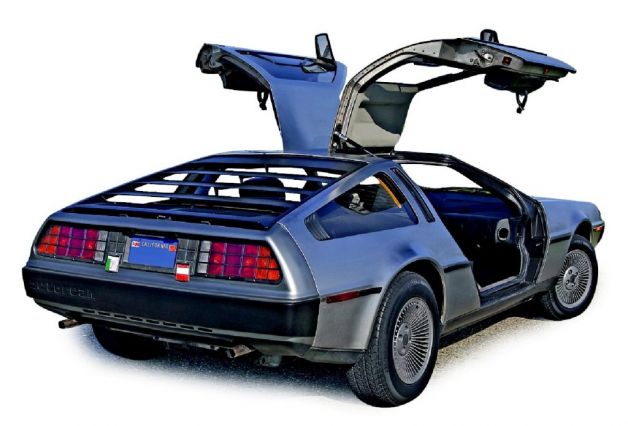
WHITE LINE FEVER
MillValleyLit: As DeLorean’s CFO it eventually became apparent to you that the books were not right. You became worried. You said, quote: “All of a sudden, John had a lot of money and he was spending it in the United States, and that to me was highly suspicious.” What was going on then?
Strycker: We had done a financing arrangement with Lotus to manufacture the prototype, and do product development. That money was supposed to be from a funding from Oppenheimer Funds in NY. John started paying off personal debt when I knew that John didn’t have money of any substantial nature. It turned out the Oppenheimer money went through a Swiss bank account, instead of going to the prototype at Lotus.
In Switzerland, the money split equally between a fellow named Colin Chapman, who happened to be Founder and CEO of Lotus, and John. They were using only the British money to do the prototype engineering production.
MillValleyLit: So the investors’ money from the States, the Oppenheimer funding, not the British money, went to a Swiss account. You were faced with a dramatic moral dilemma. How did that feel?
Strycker: I would have been complicit as a financial officer. I would have had to file a 10K and an S1 with the Federal government, as a requirement. I had a controller, and neither one of us really wanted to file a fraudulent statement. I talked to an attorney in NY, and decided that I should leave, and let John bring in a new CFO.
MillValleyLit: Who else did you tell?
Strycker: I made a disclosure to Arthur Andersen. I had a meeting with Dick Measell at Arthur Anderson. I told him they were all fraudulent returns. He didn’t seem too concerned. He sided with DeLorean. I told him that neither myself, nor my controller, would stay. I reported it to our board of directors.
MillValleyLit: Although you voiced concerns, even your account manager at Arthur Anderson, ignored them. Don’t companies hire firms like AA accounting firm to assure investors that everything is kosher?
London’s 2002 The Telegraph—“Dark clouds taint Lotus founder Colin Chapman: Chapman died before the full deceit unraveled but at the subsequent trial of Fred Bushell, the Lotus accountant, the judge insisted that had Chapman himself been in the dock he would have received a sentence ‘of at least 10 years,’ The Telegraph Brian Stater reported. And … “In a biography, Colin Chapman: Wayward Genius, by the motor racing historian Mike Lawrence, he suggests Chapman had the business ethics of a 1950s “spiv,” used dangerous drugs to maintain a crushing schedule and ruthlessly stole other men’s ideas.”
Strycker: Yes, they are supposed to ensure that the reporting to the stockholders and the governments is correct. We made full disclosure to AA. Some was subjective. We didn’t have access to all the records. They had more records than we did. They didn’t believe us. It became worse. Dick was an account manager and was promoted. He became President of AA and was still President when it blew up with the Enron scandal in 2001—five indictments of fraudulent reporting. The Supreme Court overturned Arthur Anderson’s convictions on a technicality, but the damage was done. Arthur Anderson was done.
MillValleyLit: The man you were good friends with, who you had practically lived with, shared an office with, and had spent the last several years, putting your reputation on the line getting the company to this global level—you suspected of malfeasance. So you told him, I’m walking away? That must have been tense.
Strycker: It wasn’t pleasant.
MillValleyLit: You had the goods on him. There’s hundred of millions of dollars at stake. You told him that you were leaving, You were in IRA country, where people got shot and bombs blew people up all the time, where unemployment was rampant and somebody could probably be hired to put a person in a ditch for a six-pack of Guinness and a joint. Did you ever feel like… You weren’t afraid?
Strycker: No. Well, there were always a couple of people… We can’t put this in. Let’s just say it was pretty sticky.
MillValleyLit: He didn’t try to talk you into staying?
Strycker: No.
MillValleyLit: He knew that you wanted to be on the straight and narrow?
Strycker: He knew I was right!
MillValleyLit: But there were no consequences on the fraud until years later.
Strycker: Right. My lawyer told me, don’t get into a pissing contest with John. That if I tried to go public—because the media was so on his side as he was an international celebrity, I would lose. I could have been sued for libel. Nobody wants to crash a project. I didn’t want to crash the project.
I suffered because I raised that money. I had friends who had invested. What really got me, was that this was really the first product that was going to be coming out of North Ireland, of a substantial nature, that would demonstrate that North Ireland could manufacture consumer products on a large scale.
At that point, in the 70s, unemployment was almost 40%. A 25—year-old Irish Catholic man in N. Ireland would probably have stayed on the dole the rest of his life. No opportunities. He would never get a job with the British government or with any of the North Ireland businesses, because all the businesses were controlled by the Irish Protestants.
There was the whole ramification and ripples in the communities with the 2,000-worker plant, people had money to buy services and do things. It was a disaster when it closed.
MillValleyLit: DeLorean’s fast track life intensified into a crash and burn. Production and financial troubles soon engulfed DeLorean Motor Company. Befitting the 80s, coke became involved. Lots of coke. The FBI claimed that DeLorean, desperate to avoid bankrupting his company, intended to sell $24 million of cocaine. He was arrested in LA in 1982, accused of money laundering and drug charges. He faced 60 years in prison. What happened with you doing during this time?
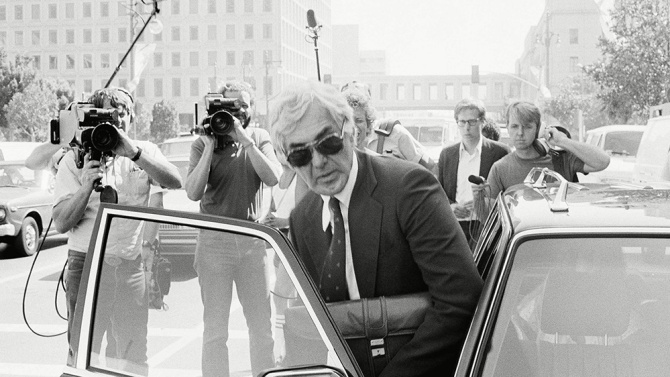
Strycker: I moved on and dropped contact with John. One of the most interesting days of my life was in a legal office one day in SF. Right after the news of John’s arrest. The receptionist called me—that three men were in the waiting area. It turned out to be an IRS agent, DEA, and an FBI. And they wanted to meet with me. I called my lawyer and met with them. They asked me some questions about John’s behavior and drugs.
I was fortunately not called to testify. His partner at Lotus, Colin Chapman, who would have been called in to testify, died of a heart attack on an airplane back to London.
MillValleyLit: A heart attack? Was it all the coke? Or a mysteriously convenient “heart attack?”
Strycker: I don’t know. It was odd. Then John did get off, two years later, on an entrapment defense. But maybe a year after he was acquitted, I ended up testifying in Detroit, where he had 13 charges including tax evasion, and grand theft. He was also indicted in Federal Court, and I had to testify before the grand jury and in the court proceedings.
BLUE SUITS & CHOCOLATE CREAM PIES
MillValleyLit: Tell me about your IBM days. Did you have to wear a blue suit?
Strycker: Yes. Three piece. White shirt. I worked for IBM in the 50 and 60s in domestic and world trade. I did a lot of traveling. In India, another IBM man had come down with Hep C. I had inoculated against Hep. But, to avoid food poisoning, which was all very common for travelers in the eastern countries, I simply ate anything but the food. I ate mostly chocolate, peanut butter, and beer.
MillValleyLit: With what other companies have you been involved?
Strycker: After IBM, I founded Decimus, a computer company, in a joint venture with BofA. Then, I was President of Rust Engineering in Pittsburgh. In the early 80s, we acquired the failing Pullman Co. Passenger Car. They made the famous sleeper cars and dome cars. It was a rescue operation. In the 90’s I was part of an investment group that would buy and sell corporations. We bought Marie Callander’s, originally a Ramada company, consisting of 164 restaurants.
The restaurants were losing a half a million dollars a year. One of the managers I hired had done catering for Hugh Hefner. The showcase restaurant was next to LA County Museum and SAG. Johnny Carson’s piano player free-lanced there. It became more hands on than I intended. I gained six pounds eating their signature pies – 1200 calories a slice. We did a one million dollar turnaround on that location.
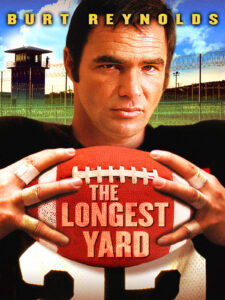
GUINNESS & BURT REYNOLDS, FLIRTING WITH DEATH & THE KGB
MillValleyLit: What is another successful business story?
Strycker: We worked with Guinness to develop entertainment. We helped finance feature film for theater and TV. We had 20% of The Longest Yard with Burt Reynolds. We made it for under 3 million and grossed over 22 million, and picked up a Golden Globe.
MillValleyLit: You have been very successful. Tell us some stories about not being successful or problems you’ve overcome.
Strycker: This is the “THE THREE GRINGOS” story: Two friends and I convinced ourselves into buying a commuter airline in Puerto Rico. A friend had told us that—It was a lay up—it turned into a setup. The books were cooked. We knew nothing about airlines. We were told the company had a million bucks in aircraft spare parts. The parts turned out to be DC3 parts, and the mishmash of seventeen aircraft the company owned, none were DC3s, and no one else wanted the parts. It was a mess. We started selling the planes, and one day a man came in to buy our Aero-coup, and offered us $35,000 cash in a paper bag. I figured the purchase might be used for contraband so I sent my man running over to the FAA to register the sale right away. Sure enough, in thirty days, the FAA called us about its confiscation for drug smuggling. They had all kinds of planes over in their impound.
MillValleyLit: You were in an airplane crash during this messy time?
Strycker: One was. That was my second plane crash. The first was a big B-29 four-engine bomber when I was a Staff Sergeant in the Air Force. It was the same model plane as the Enola Gay, which carried the atomic bombs to Japan. We crashed with a bad prop and no landing gear right up at Hamilton Field in Novato. The second was in Puerto Rico in a Twin Otter where with 30-35 knot side-wind, we ended up in the ocean. The third was an executive helicopter that picked me up on a roof in Houston after a meeting to take me out to the airport, and it went down. The pilot managed to get it over an empty lot that was still marsh right in downtown Houston, and we crashed and bounced, and we were OK. So all three crashes, I walked away—or swam away.
MillValleyLit: You’re very lucky!
Strycker: Am I?! I didn’t think so during the third crash. It was the car crashes that were worse. I survived eleven automobile accidents, including being thrown 120 feet from a convertible on Skyline Boulevard, around Santa Cruz, which almost killed me. The doctor came in every morning and told me I was lucky in that one. I also survived prostate cancer in 1993.
MillValleyLit: You definitely qualify as a survivor. Speaking of risky behavior, you mentioned that you had dinner with a KGB agent. At least you knew it. After watching the “Americans” on TV, I suppose a number of high profile players might have, without realizing it. How did this come about?
Strycker: A friend of mine, Harvey Hament, invited me along. He had been at the Yalta conference with Stalin, Churchill, and Roosevelt. He worked with Casey and Ed Meese under Reagan. Harvey was a kind of “liaison” between the Feds and the USSR. He said that we would meet this Russian and walk to dinner. The Russian was the ex-head of the KGB. There would also be two men from the Russian Embassy. He described how it would unfold, which it then did: my friend and the KGB agent—the pair of them would walk separately behind us and talk, before re-joining our group. Then it was just a “casual” dinner at the Palm restaurant in Manhattan. Harvey said the fun part would be the Russians spending the evening trying to figure out if I were FBI or CIA.
MillValleyLit: And?
Strycker: They decided I was FBI.
MillValleyLit: Must have been the IBM training! You’re “retired” but you grow grapes, so you are really a farmer now, right? And you are a board member of the Belvedere Flood Zone Commission. What is the gist of that?
Strycker: Yes. We are working on local compliance with FEMA regulations and flood insurance, which could have a hugely negative impact on property owners. We’re trying to get a handle on it.
MillValleyLit: You have done and accomplished much in your life. Anything you have not done that you wanted to do or be?
Strycker: Now that I have been portrayed on the London stage? (laughs) A show called, “JD & COKE”* by Jon Ivay, about DeLorean, of course. There is one thing I want to be. I want to be Arnold Palmer.
MillValleyLit: You mean you wanted to be a pro golfer?
Strycker: No, not just any pro golfer. If I had to come back and live my life over, I would want to be Arnold Palmer.
End
* “JD & COKE” – The stage play (pre-production from Spring 2012). “John Ivay’s latest project ‘JD & COKE’ tells the story of John Delorean’s struggle to build the DeLorean DMC-12 Sports car in Belfast between 1978 and 1982. As an actor Jon Ivay has appeared many times on stage and television. He has appeared in the films The Gigolos, Telstar & Freebird. His most recent credit on television is the BBC Drama Spooks.”
(from http://en.wikipedia.org/wiki/Jon_Ivay )
Copyright 2013, 2023 J.Macon King and MillValleyLit and may not be reprinted in parts or entirety without express permission.
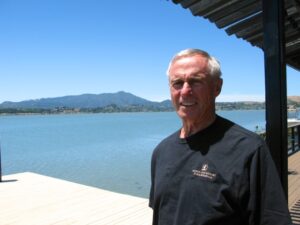
In Memoriam: Walter Strycker passed away at his Belvedere, CA home, January 16, 2023 at the age of 95, with his wife Connie and daughter Jana comforting.
Get LIT and keep us fired up. NEW Free original-design spiral notebook for a donation of $50.00 or more. While supplies last.
Donate via Venmo Venmo profile (perry-king-5) or PayPal Info on donating and notebook here.
THE FLUX CAPACITOR RIDES AGAIN
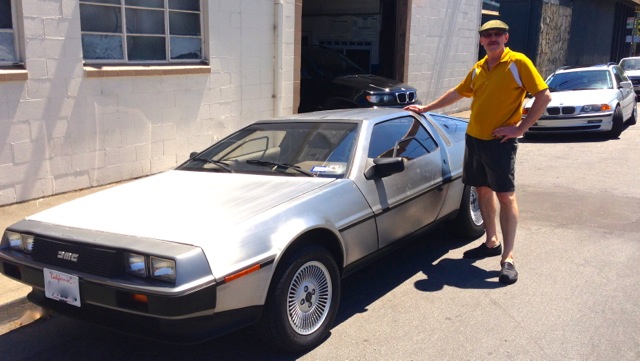
J. Macon King in Mill Valley, 2013. Photo: Perry King.
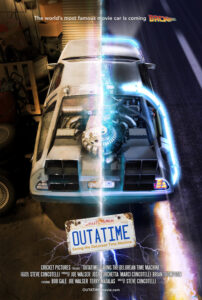
Since this Walter Strycker interview was published in 2013, Strycker was interviewed numerous times. Several DeLorean movies and documentaries made use of his filmed and recorded interviews and credit his firsthand knowledge.
“The Back to the Future Time Machine has been voted the most famous car in film history. For nearly 30 years, the car has remained a global phenomenon, appearing in numerous films, television shows, posters, toys and games. Fans across the world have even gone so far as to convert their own DeLoreans into Time Machine replicas.” From OUTATIME movie promo. A doc to celebrate the restoration of the customized DeLoren used in 1985’s “Back to the Future” was released in 2016, entitled OUTATIME. Joe Walser, feature film art director, BTTF superfan was supervisor of the car’s restoration.
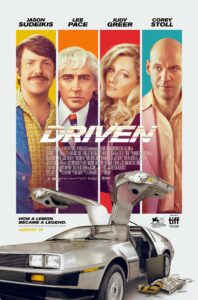
Driven is a 2018 biographical comedy thriller film directed by Nick Hamm and written by Colin Bateman. The film stars Lee Pace (Halt and Catch Fire) as DeLorean, Jason Sudeikis, Judy Greer, Isabel Arraiza, Michael Cudlitz, Erin Moriarty, Iddo Goldberg, Tara Summers, Justin Bartha, and Corey Stoll. The film premiered at the 75th Venice International Film Festival on September 8, 2018. (From Wikipedia.)

Walter Strycker, former CFO of DeLorean Motor Car, was interviewed for and shown in DeLorean 2019 documentary, Framing John DeLorean, by filmmaker Tamir Ardon. Alec Baldwin plays the DeLorean role for the movie within the doc.
Framing John DeLorean promo asks: “Who was the real John DeLorean? To some, he was a renegade visionary who revolutionized the automobile industry. To others, he was the ultimate con man.” The film was told through the eyes of family, colleagues like Strycker, and competing Hollywood filmmakers who have struggled to bring his story to the big screen.
Several members of the DeLorean family are participating, including his children Zachary and Kathryn, his brother and his nephew. Directed by Don Argott and Sheena M. Joyce, produced by Tamir Ardon. Production included the site of the original DeLorean Motor Car factory in Belfast.
“Why are there so many different versions of the man? How do you really know a person? Who was the real John DeLorean? Can you be both hero and villain?” asks director Joyce.

Myth & Mogul: John DeLorean 2021 documentary from Netflix.
“In the automotive world, John DeLorean rose from engineer to executive to icon. But under the hood of his self-created legend lies darkness and deceit.” From promo.
And some just starring The Car….

“…something particularly shiny and interesting popped up in the opening minutes of Fast X. You may have noticed that when a wounded Cipher (Charlize Theron) pulls up at Dominic Toretto’s (Vin Diesel) home in Los Angeles to warn him about Dante (Jason Momoa), she’s driving a shiny silver DeLorean, a car brand you’re not used to seeing regularly on the streets these days. But this wasn’t just any DeLorean, according to NBCUniversal, it’s an electric DeLorean Alpha5, so new that it hasn’t even hit the consumer market yet.” By Matthew Jackson Dec 4, 2023, SYFY.com.
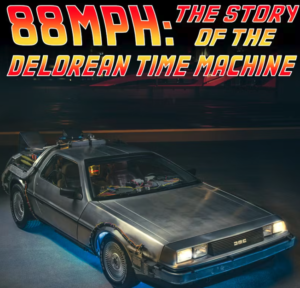
“…a new documentary released by the Hagerty Drivers Foundation. In the first three minutes of 88mph: The Story of the DeLorean Time Machine, no fewer than 13 enthusiasts—including movie stars Michael J. Fox and Lea Thompson—appear on screen to tout the staying power of the fictitious time machine that first appeared in the original 1985 film. And many more weigh in during the next hour and a half. Weaving together original film clips, news stories, and interviews, along with fresh sit-down sessions with the key players, the documentary covers the rise and fall of John Z. DeLorean and the DeLorean Motor Company…” Jeff Peek, Haggerty Media,
Photographs below by Stephen Finerty.
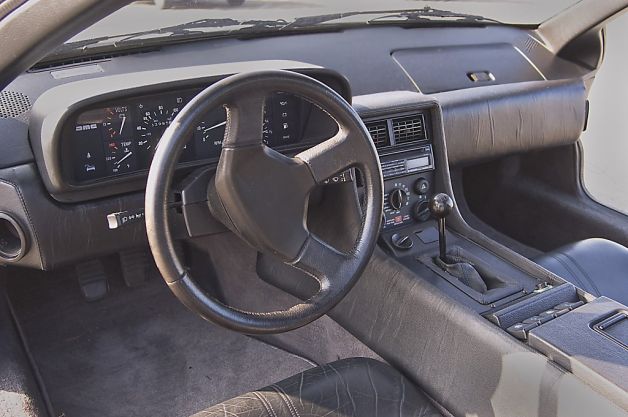
The cars are still quite collectible. A DeLorean was spotted in Mill Valley near the 2 AM Club. The Grahams, owners of Patterson’s Irish Pub in Mendocino, display a DeLorean, which was written up May, 2013 in the SF Chronicle. http://www.sfgate.com/cars/myride/article/1981-DeLorean-DMC-12-4484330.php#photo-4566048
 GE reunited a DeLorean with Michael J. Fox narration, in a commercial, which aired for the SF-Seattle football game 9-15-2013. The game was ironically delayed by lightning strikes – from over-charging the flux capacitor, no doubt.
GE reunited a DeLorean with Michael J. Fox narration, in a commercial, which aired for the SF-Seattle football game 9-15-2013. The game was ironically delayed by lightning strikes – from over-charging the flux capacitor, no doubt.
The company FLUX Power in 2011 announced bringing back the car. The new electric DeLorean and was supposed to be available in 2013. There was also a DeLorean bicycle company announced. Unclear if any of this occurred.
